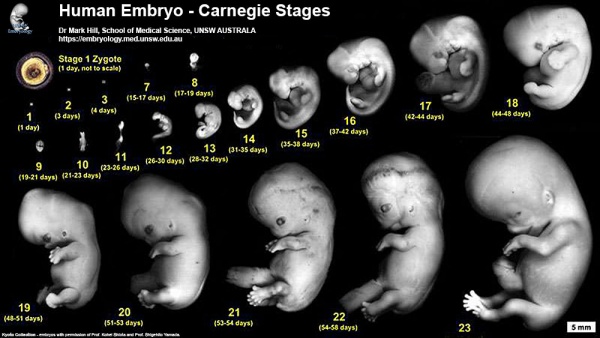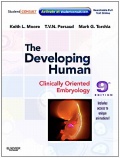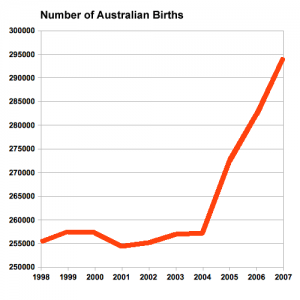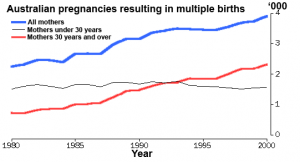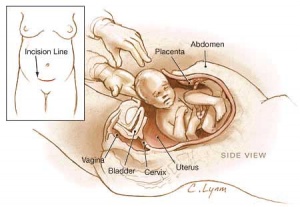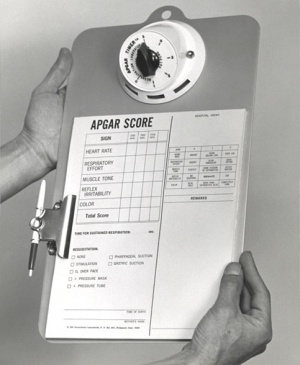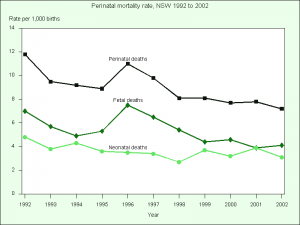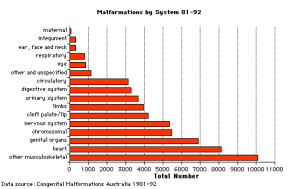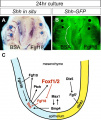Lecture - 2012 Course Introduction: Difference between revisions
| Line 1: | Line 1: | ||
= A Course Introduction= | = A Course Introduction= | ||
[[ | {| | ||
| '''From this''' [[File:Early_zygote.jpg|210px]] | |||
| '''to this''' [[File:Newborn.jpg|300px]] '''in 9 months''' | |||
|} | |||
{| | {| | ||
Revision as of 08:08, 24 July 2012
A Course Introduction
From this 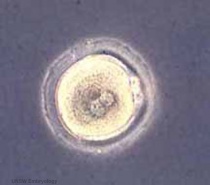
|
to this  in 9 months in 9 months
|
MH - I do not expect you to remember specific historic dates or statistical data, this is provided as an introduction to the topic.
Objectives
- Understand the course objectives and assessment.
- Brief understanding of Australian statistical data.
- Broad overview of Human Development.
ANAT2341 Course Background 2012
I will spend the first half going through the current course design, online support and assessment criteria. This is an opportunity to ask the course coordinator questions about the course.
The first 8 weeks of human development.
Links: Course Homepage
Textbooks
Either of the textbooks listed below are recommended for this course and page references to both are given in each lecture. Both textbooks available at campus bookshop. There are additional embryology textbooks that can also be used, consult course organizer. See also Embryology Textbooks
The Developing Human: Clinically Oriented Embryology (8th ed.)
Larsen’s Human Embryology (4th ed.)
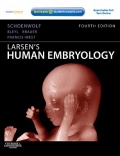
|
Schoenwolf, G.C., Bleyl, S.B., Brauer, P.R. and Francis-West, P.H. (2009). Larsen’s Human Embryology (4th ed.). New York; Edinburgh: Churchill Livingstone.
|
Publisher Links: The Developing Human: Clinically Oriented Embryology | Larsen’s Human Embryology
Recent History
1965 - Neural Crest Research Nicole Le Douarin.
1977 - Thalidomide and its affects on development. Thalidomide
1978 - First IVF baby born. In Vitro Fertilization
1996 - "Dolly the sheep" First adult somatic cell cloning using the process of nuclear transfer.
Nobel Prizes
Much of the modern history of Medicine/Embryology is documented in the Nobel Prizes for Medicine. Remember that these award dates reflect findings that have proven to be scientific key breakthroughs from earlier dates.
- 1986 discoveries of growth factors
- 1995 genetic control of early embryonic development
- 2002 cell cycle
- 2002 cell death
- 2007 embryonic stem cells
21st Century
|
|
- Links: Embryology History
Applied Embryology
This recent data summarised below from Australia's mothers and babies 2007[1] is provided to help you as a clinician and researcher understand the current trends in reproductive medicine within Australia.
Mothers
- 289,496 women gave birth resulting in a total of 294,205 births
- increase of 4.3% from 2006, and 14.4% increase since 2004
- 2,177 were fetal deaths
- 29.9 years was the maternal mean age in 2007 compared with 28.9 years in 1998 Why is this increasing age important?
- 41.6% of mothers had their first baby and 33.5% had their second baby
- 10,883 women were Aboriginal or Torres Strait Islander (3.8% of all women who gave birth)
- 39.5% of all mothers in the Northern Territory
- 25.2 years was the average age of these women who gave birth
- 3.1% women received ART treatment (see also below Assisted Reproduction Technology)
Smoking during pregnancy
- 16.6% of women smoked during pregnancy (similar proportion over the previous five years)
Preterm birth
- 7.4% of all mothers (less than 37 completed weeks of gestation)
- 38.8 weeks is the average duration of pregnancy
Multiple pregnancy
- 4,634 multiple pregnancies (1.6% of all mothers) increasing due to the increased use of ART
- 4,558 twin pregnancies, 76 triplet pregnancies and no quadruplet pregnancies
Method of birth
- Presentation at birth - 94.6% cephalic (any part vertex, face, or brow of the fetal head) 4.0% breech (buttocks or feet)
- 57.9% vaginal births
- 11.2% had an instrumental vaginal delivery (forceps or vacuum extraction)
- 30.9% caesarean section births
- 21.1% in 1998, 30.8% in 2006, rate recently stable
- 83.3% of these were repeat caesarean sections
- The following conditions were also reported: epilepsy, diabetes mellitus and hypertension, antepartum haemorrhage, gestational diabetes, cord prolapse and retained placenta, pregnancy-induced hypertension, fetal distress in labour and post-partum haemorrhage rates
Babies
- 292,027 live births and 2,177 fetal deaths
- stillbirth rate of 7.4 per 1,000 births
- most births occurred in March, August and October
- 105.6 sex ratio (number of male per 100 female liveborn babies)
Gestational age
- 90.9% term (37–41 weeks gestation)
- 8.1% were preterm and 33.2 weeks was the mean gestational age for all preterm births
- Preterm births were classified groups of 20–27 weeks, 28–31 weeks and 32–36 weeks
Birthweight
- 92.1% of liveborn babies had a birthweight in the range 2,500–4,499 grams
- average birthweight was 3,374 grams
- 17,976 (6.2%) low birthweight (weighing less than 2,500 grams)
- 2,956 (1.0%) very low birthweight (weighing less than 1,500 grams)
- 1,288 (0.4%) extremely low birthweight (weighing less than 1,000 grams)
Apgar scores - 1.4% of liveborn babies had a low Apgar score (between 0 and 6) at 5 minutes (More? Apgar test)
Perinatal mortality
- 2,177 fetal deaths (7.4 per 1,000 births)
- fetal deaths are if the birthweight is at least 400 grams or the gestational age is 20 weeks or more
- 846 neonatal deaths (2.9 per 1,000 live births)
- neonatal deaths are those occurring in live births up to 28 completed days after birth
- 3,024 Australian perinatal deaths
- perinatal death includes birthweight of at least 400 grams or, where birthweight is unknown, a gestational age of at least 20 weeks
- 23.5% congenital abnormalities (anomalies)
- 13.8% maternal conditions
- 12.6% unexplained antepartum death
Assisted Reproduction Technology
Assisted Reproduction Technology (ART) may include more techniques than, but is sometimes also used to identify, In vitro Fertilization (IVF).
- 51,017 treatment cycles reported to ANZARD in Australia and New Zealand in 2005.
- 91.1% were from Australian fertility and 8.9% from New Zealand centres (an increase of 13.7% of ART treatment cycles from 2004).
- 35.5 years average age of women (35.2 years in 2002).
- Women aged older than 40 years has increased from 14.3% in 2002 to 15.3% in 2005.
Single Embryo Transfers (SET)
- Significant increase in the number of SET embryos transfer cycles: 2002 28.4%; 2005 48.3%
- Single-embryo transfer babies had better outcomes compared to babies born to women who had a double-embryo transfer (DET).
- Singletons babies 96.1% SET, 61.6% DET Preterm babies, 11.7% SET, 30.6% DET Low birthweight liveborn babies, 8.0% SET, 25.0% DET
(Reference: AIHW National Perinatal Statistics Unit Assisted Reproduction Technology in Australia and New Zealand 2005)
Australian Developmental Abnormalities
The ten most frequently reported birth defects in Victoria between 2003-2004
- Hypospadias
- Obstructive Defects of the Renal Pelvis or Obstructive Genitourinary Defects
- Ventricular Septal Defect
- Congenital Dislocated Hip
- Trisomy 21 or Down syndrome
- Hydrocephalus
- Cleft Palate
- Trisomy 18 or Edward Syndrome - multiple abnormalities of the heart, diaphragm, lungs, kidneys, ureters and palate 86% discontinued.
- Renal Agenesis/Dysgenesis - reduction in neonatal death and stillbirth since 1993 may be due to the more severe cases being identified in utero and being represented amongst the increased proportion of terminations (approximately 31%).
- Cleft Lip and Palate - occur with another defect in 33.7% of cases.
Teratology
Teratology is the study of abnormalities of development.
Rubella
<pubmed>1879476</pubmed>
Thalidomide
<pubmed>331548</pubmed>
- Links: Human Abnormal Development | Thalidomide | TORCH Infections | History of Teratology | eMJA - Gregg's congenital rubella
Human Development Timeline
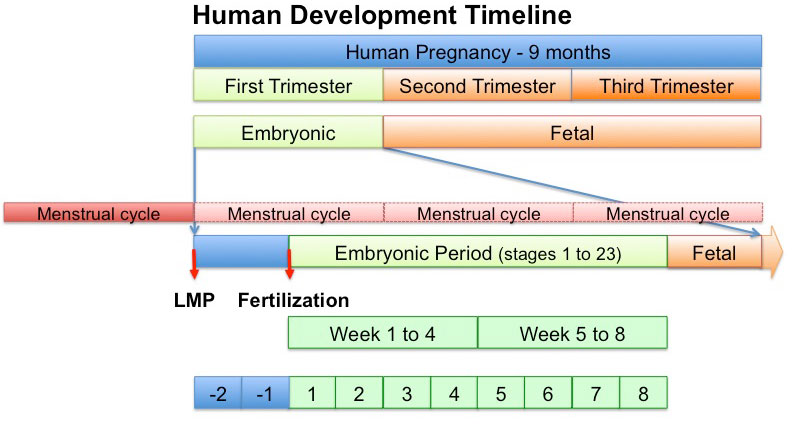
|
<Flowplayer height="225" width="180" autoplay="true">Human development 001.flv</Flowplayer> |
External Links
External Links Notice - The dynamic nature of the internet may mean that some of these listed links may no longer function. If the link no longer works search the web with the link text or name. Links to any external commercial sites are provided for information purposes only and should never be considered an endorsement. UNSW Embryology is provided as an educational resource with no clinical information or commercial affiliation.
- 2012 Course: Week 1 Lecture 1 Lecture 2 Lab 1 | Week 2 Lecture 3 Lecture 4 Lab 2 | Week 3 Lecture 5 Lecture 6 Lab 3 | Week 4 Lecture 7 Lecture 8 Lab 4 | Week 5 Lecture 9 Lecture 10 Lab 5 | Week 6 Lecture 11 Lecture 12 Lab 6 | Week 7 Lecture 13 Lecture 14 | Lab 7 | Week 8 Lecture 15 Lecture 16 Lab 8 | Week 9 Lecture 17 Lecture 18 Lab 9 | Week 10 Lecture 19 Lecture 20 Lab 10 | Week 11 Lecture 21 Lecture 22 Lab 11 | Week 12 Lecture 23 Lecture 24 Lab 12
Glossary Links
- Glossary: A | B | C | D | E | F | G | H | I | J | K | L | M | N | O | P | Q | R | S | T | U | V | W | X | Y | Z | Numbers | Symbols | Term Link
Cite this page: Hill, M.A. (2024, May 8) Embryology Lecture - 2012 Course Introduction. Retrieved from https://embryology.med.unsw.edu.au/embryology/index.php/Lecture_-_2012_Course_Introduction
- © Dr Mark Hill 2024, UNSW Embryology ISBN: 978 0 7334 2609 4 - UNSW CRICOS Provider Code No. 00098G
- ↑ Laws P & Sullivan EA 2009. Australia's mothers and babies 2007 Perinatal statistics series no. 23. Cat. no. PER 48. Sydney: AIHW National Perinatal Statistics Unit.

